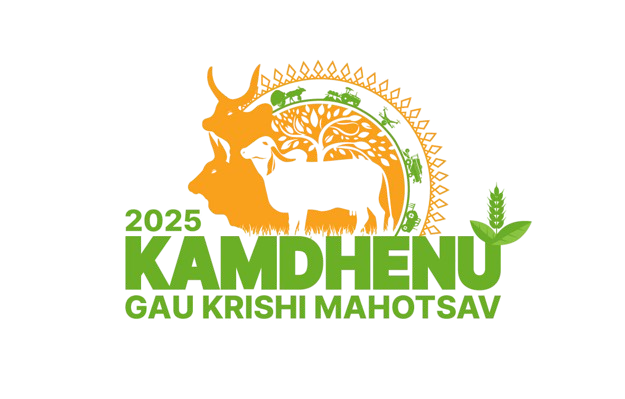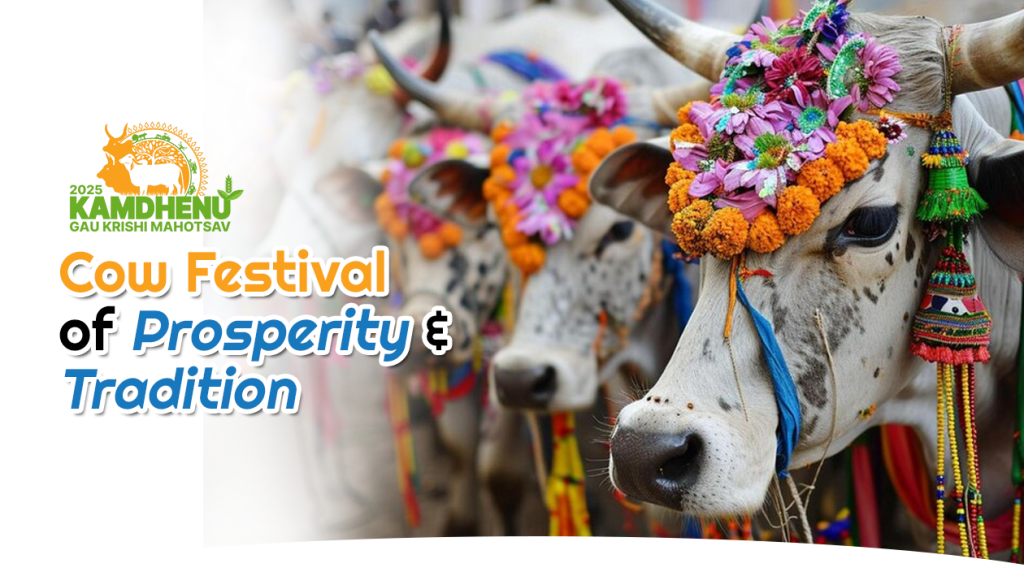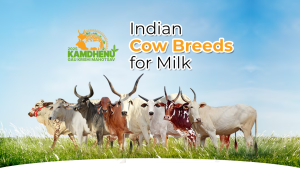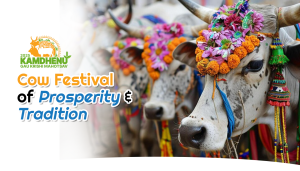Cow Festival of Prosperity and Tradition
Many cultures throughout the world historically held the cow in high regard, in particular in India, where it is considered as a symbol of childbirth, life, and feeding. The Cow Festival, referred to as “Gau Mahotsav,” is a festival focused on this sacred animal, acknowledging its vital function in dairy production, agriculture, and cult practices. The occasion praises the cow while additionally promoting the value of ecologically conscious methods of cultivation, the preservation of culture, and ethical farming. The significance of the Cow Festival, its many habits and their impact on the environment and society will all receive attention in this article.

Historical and Cultural Significance
Hinduism focuses an immense amount of value on cows, regarding them as symbolic of abundance where peaceful protest, and purity. Cows were thought of as the household’s bounty in the early Vedic time, when cows initially rose to importance. They furnished milk, a vital component of the diet, and their waste served as fertilizer and burning wood. Many of Hindu deities have also been linked to cows, particularly Lord Krishna, who usually appears as a cowherd.
Read More: KGKM India
Grounded in this great cultural and religious significance is the Cow Festival. It’s a way to offer gratitude to the cow’s role in human life and to highlight its value of sustainability and compassion. The getaway is celebrated with immense excitement in several places of India, mainly in rural areas where agriculture and dairy farming are the important sources of livelihood.

Rituals and Celebrations
The Cow Festival is marked with a number of norms that vary between place to place, nevertheless some common norms contain the painting of cows’ horns, adorning of cows with bells and cloth, offering of special baths to the cows, and the painting of henna on their paws.
The “Gau Puja,” or devotion of cows, is one of the main practices of the Cow Festival. In means to request the cow for blessings relating to fortune and wellness, people bring flowers, candies, and other items to it during this celebration. In some communities, monks make special prayers and recite hymns from the Vedas to commemorate the cow.
A different approach essential part of the festival is the “Gau Daan” or the gifts of cows. This following is regarded highly positively, and it is figured that offering a cow brings tremendous spiritual merit. In some places, people also spread food and sweets to the poor and in need, reflecting the cow’s role as a provider and nurturer.
In addition to these customs, the Cow Festival is also a moment for cultural events and community celebrations. Traditional music and dance events are held, and people come together to rejoice in their shared heritage. In some domains, competitions are planned, such as cow beauty contests, where the best-decorated cow is awarded an award.

Environmental and Agricultural Importance
The Cow Festival has a significant impact on agriculture and the environment along with its function as a religious and cultural festival. The event serves as a reminder of the cow’s vital place in environmentally conscious methods of farming. Cow dung, which has been used as an organic fertilizer, helping the land maintain productivity. By preserving the soil well, this natural manure minimizes the need for chemical fertilizers that’s bad for the enviornment.
Besides their relevance in agriculture, cows perform a significant role in dairy farming. The Cow Festival honors the crucial function that milk and other dairy products serve in the Indian diet. The festival also promotes the necessity of ethical and humane treatment of creatures. By commemorating the cow, the festival supports the idea of sympathy to all living beings, advocating activities that are in balance with nature.

Economic and Social Impact
The Cow Festival lets local businesses and creative people, particularly within remote areas, where it has an immense economic impact. During the festival, there is an uptick in demand for cow-related objects such as milk, ghee, and cow dung cakes, giving farmers and dairy producers a source of wealth. Likewise, the trade in of aesthetic things like linen, bells, and garlands aids to support the local handcrafts.
Furthermore, the event develops social integration and a sense of community. It connects folks to mark their shared past, no matter their economic or social status. The Cow Festival presents the opportunity for people to reclaim their ancestry, acknowledge the value of agriculture, and reinforce the ideals of caring and kindness.

Modern Adaptations and Challenges
Modern adaptations have been applied to the Cow Festival in recent years, particularly among cities which may not be as powerful of a link to agriculture. Still, the festival’s core values are being respected. The occasion can often be seen in cities through public education endeavors that promote the contribution of cows to the ecosystem while promoting sustainable agriculture practices. Children may additionally acquire knowledge about the cultural and environmental benefits of cows via arranged lessons.
The Cow Festival has several advantageous characteristics, but it also has downsides. Animal welfare concerns are present as the consequence of the festival’s profit-seeking in certain regions. There have been incidents involving cows suffering abuse or exploited during the occasion, which runs directly to the very concepts the celebration attempts to foster. In order to ensure that the festival maintains to be a celebration of sustainability and compassion, both residents and authorities must work jointly to address such issues.

Conclusion
One of the most loved animals in Indian culture receives recognition with a vibrant and dramatic ceremonies recognized as the Cow Festival. The ceremony encompasses social, agricultural, and ecological aspects alongside the ceremonies of faith. By remembering the Cow Festival, we promote our values of sustainability, generosity, and community as well as appreciating the contributions that cows have provided to our lives. The Cow Festival functions as a reminder of the ancient wisdom gained from interacting happily with nature and exhibiting respect for all that exists in a world that is changing swiftly.





